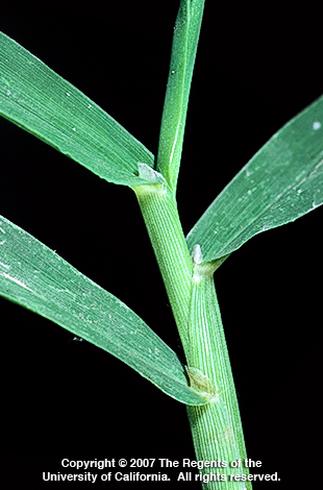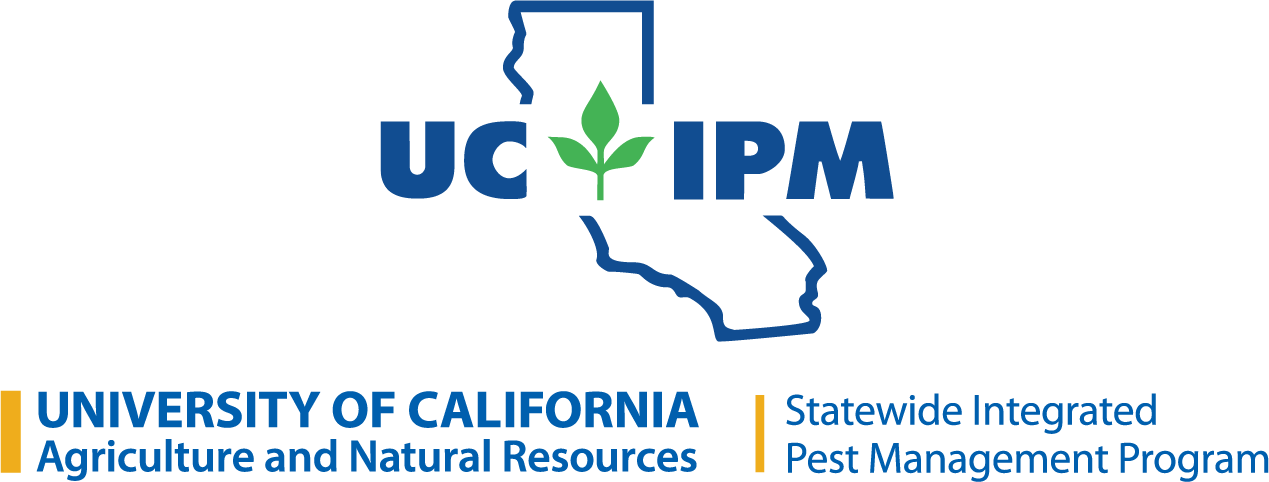A common weed in turf, smooth crabgrass is a low-growing, summer annual grass that spreads by seed and from occasional rooting of the lowest joints of the stems. In California it is found in the Central Valley, San Francisco Bay region, northern Sierra Nevada, Central Coast, and South Coast, up to an elevation of 2600 feet (about 800 m). In California, smooth crabgrass is more often found in turf whereas large crabgrass is more often found in gardens or landscape areas. It can provide good forage for livestock.
Habitat
Crop fields, orchards, vineyards, gardens, landscaped areas, turf, nurseries, pastures, roadsides, ditches, and other disturbed places.

Mature Plant
Stems grow mostly upright, sometimes prostrate, and are usually branched at the base. Stems are flattened in cross-section. Leaves are flat, rolled in the bud, have a prominent midvein, and are 1/4 to 1/3 of an inch (6–8 mm) wide, up to 5 inches (12.5 cm) long, and pointed. The leaves are hairless except for some long hairs at the position of auricle, and sometimes, sparse hairs on the lower leaf surface. Some leaf bases have a reddish tint. Smooth crabgrass is distinguished from large crabgrass, D. sanguinalis, by its shorter, wider leaf and lack of hairs. It is most often found in turfgrass.

Collar Region
Ligules are short and membranous. There are no auricles.

Flowers
Flowering takes place from September through November. Flowers cluster along spikelike branches in one, or more often, two whorls at the stem tip.

Fruits
Spikelets are under 1/10 of an inch (about 2.5 mm), football shaped, and have a stalk with a disklike tip.

Reproduction
Reproduces by seed.
